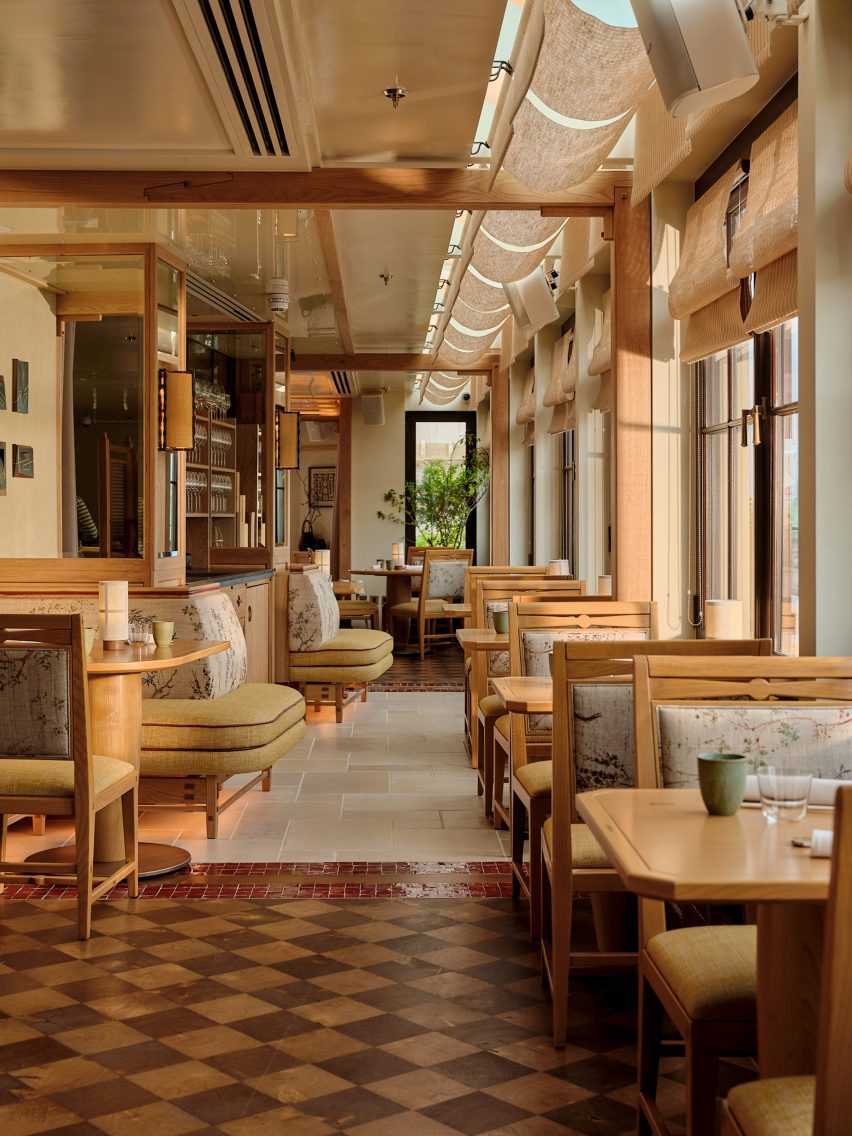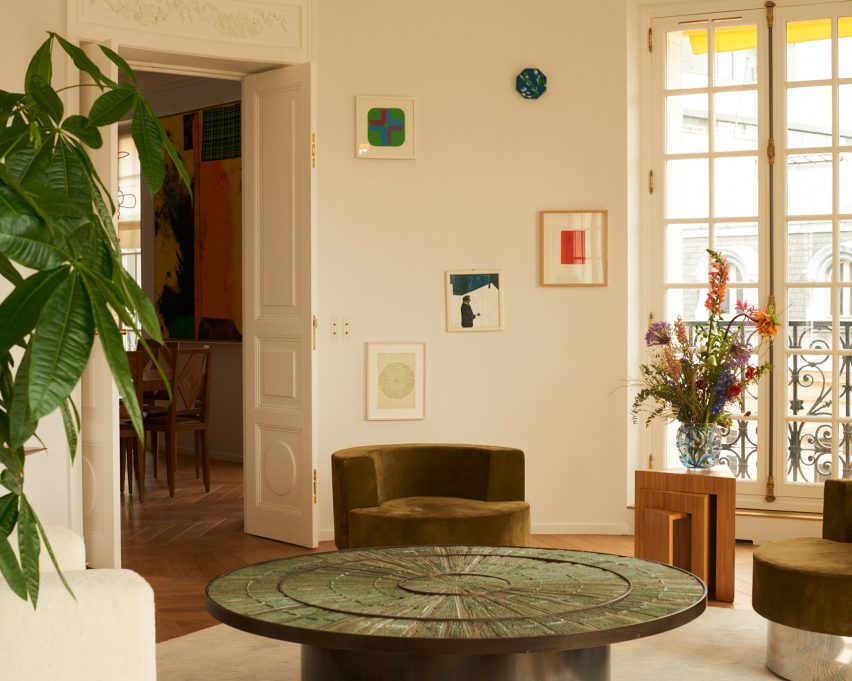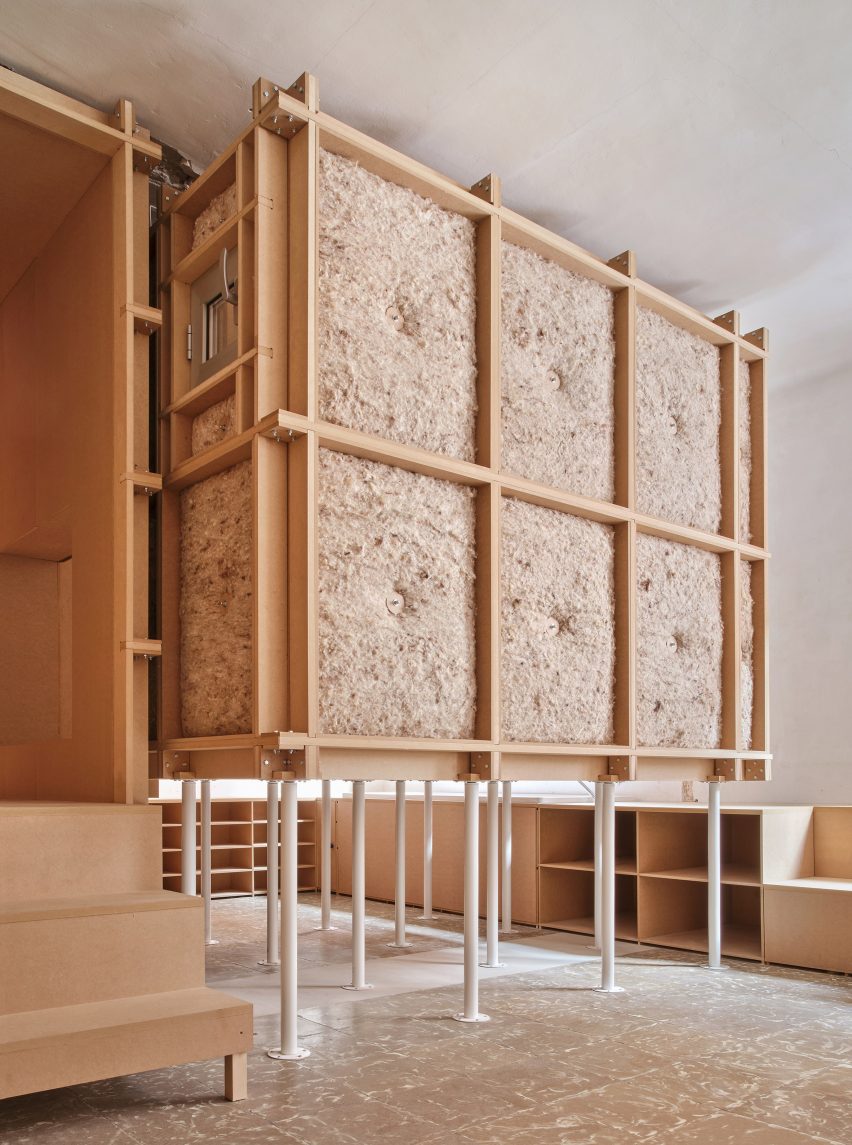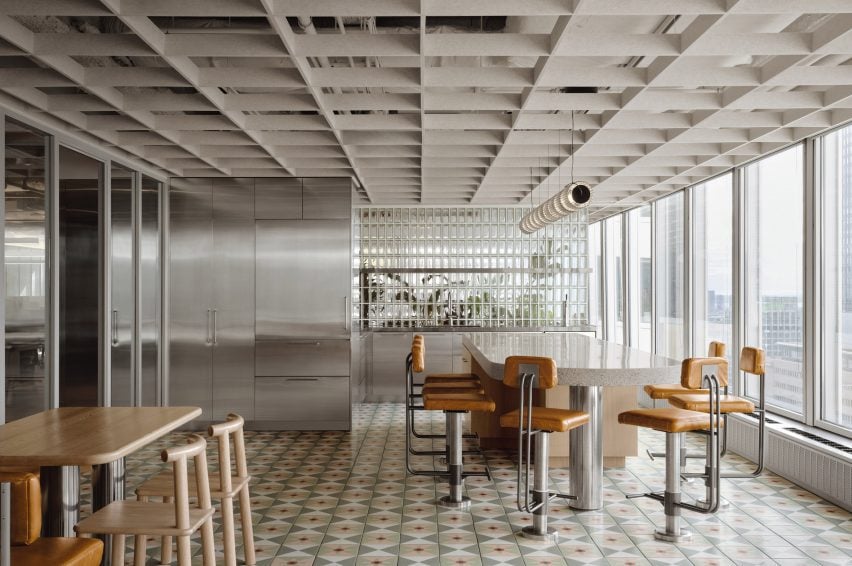Inside design in 2025 will honour the century-old ideas of artwork deco, favouring assertion objects made to final in a departure from the impartial minimalism that characterised a lot of final yr, designers have instructed Dezeen.
Because the fresh yr will get underway, Dezeen spoke to inside designers about their pattern predictions for 2025. The creatives had been united in acknowledging the ever-growing urgency of sustainability, however with out compromising on much-needed escapism in myriad kinds.
“Final yr, we noticed numerous natural structure and humble interiors,” mirrored Dorothée Meilichzon, who was topped inside designer of the yr at November’s Dezeen Awards.
“Perhaps now it is time to transfer in the wrong way whereas reusing parts from the previous,” stated the French designer.
“Actuality is tremendous powerful all all over the world,” she added. “We would want to return to dreaming! I’m questioning if we will likely be again to grandiose and bigger-than-reality. A bit out of scale, revisited baroque – old-school interiors twisted.”
Smita Thomas, founding father of Bengaluru studio Multitude of Sins, agreed.
“The period of monotone, single-colour, single-material areas is fading into oblivion,” she instructed Dezeen. “This shift will emerge from a collective craving for authenticity and connection in a world that feels more and more fragmented.”
That sentiment was echoed by Julien Sebban, founding father of Paris studio Uchronia and the 2023 winner of the Dezeen Award for rising inside designer.
“Whereas 2024 has been about minimalism and earthy tones, 2025 will take a bolder step in the direction of experimentation and self-expression,” he stated. “The main target will shift from merely purposeful and impartial to extra animated, emotionally participating designs.”
“Mavericks will emerge”
Retreating from minimalism won’t be as plain as coating all the pieces in daring colors and textures, stated Thomas.
Reasonably, she acknowledged a collective need so as to add persona and which means to inside areas after a sustained pattern for beige and infrequently flat properties.
“We’ll transfer past merely making a splash,” speculated the designer. “It’s going to be about depth and nuance. We’ll see a surge of creativity that breaks free from conference.”
“I imagine we’re on the cusp of a seismic shift in design, the place extra trailblazers and mavericks will emerge, creating house for liberated and real work,” she added.

Executing assertion interiors doesn’t essentially imply extra is extra, acknowledged James Lees, co-founder of London studio Pirajean Lees.
“We’re embracing a life-style of much less, the place each piece we personal carries which means and fosters an emotional connection,” he recommended.
“There is a renewed appreciation for craft – celebrating the handmade and discovering magnificence within the pure imperfections of supplies and objects,” added Lees.
“The highlight is on high quality supplies, prosperous textures and skilled craftsmanship,” added fellow co-founder Clémence Pirajean.
Restoration from marble “overdose”
This yr marks 100 years since artwork deco – tiny for arts décoratifs – emerged on the Worldwide Exhibition of Current Ornamental and Industrial Arts, held in Paris in 1925.
The centenary not misplaced on inside designers, a few of whom imagine that it gives an opportunity to revisit the fashion’s core values.
“At a time when sustainability is imperative, the art-deco fashion attracts with its give attention to high-quality supplies and objects designed to final,” stated Paris collaborators Samantha Hauvette and Lucas Madani.
“Not like ephemeral traits, artwork deco favours well-constructed furnishings and tough supplies in step with as we speak’s need to scale back speedy consumption and favour items that may stand the check of time,” they added.

“Some traits are in peril of disappearing quickly due to the velocity with which social networks unfold fashions, and the responsiveness of producers to provide affordable copies,” continued Hauvette and Madani.
“This phenomenon creates a saturation level that makes sure items, initially extremely prized, virtually lifeless.”
The designers cited beige boucle round-shaped furnishings, ceramic or plaster-clad lighting and the “indiscriminate employ of marble” as drained and overexploited.
“These traits had been initially appreciated for his or her originality. However their large reputation, fuelled by extreme manufacturing, shortly led to an aesthetic ‘overdose’,” stated Hauvette and Madani.
“Artwork deco’s magnificence, timeless high quality and symbolism of resilience make it a mode that responds to as we speak’s aspirations and challenges.”
“Localisation ought to grow to be extra pronounced”
Unsurprisingly, designers had been involved about sustainability. Tokyo imaginative Keiji Ashizawa known as for the localisation of inside design to minimise the worldwide transportation of supplies.
“That is an imperative pattern that’s sustainable and essential to protect native tradition, creating individuality in every place,” stated Ashizawa, identified for utilizing Japanese wooden and different high-quality pure supplies.
“Localisation ought to grow to be extra pronounced with every passing yr,” he added. “I believe designers will likely be required to develop supplies and take part in manufacturing.”
Famend for initiatives championing capable insulation, Barcelona studio Takk envisaged shifting away from a typical residential mannequin primarily based on closed rooms accessed by means of “limitless corridors”.
“Areas nested inside one another as an alternative of positioned alongside corridors enable us, along with reinventing privateness, to manage the local weather of every room, saving power,” stated studio co-founders Mireia Luzárraga and Alejandro Muiño.

The designers cited native wooden, cork, cotton and wool as sustainable supplies that present heat to home areas.
“We’re more and more going to maneuver in the direction of extra beneficiant areas with out so many dividing partitions, the place even areas historically designed for particular person employ comparable to loos will grow to be areas that can be utilized in firm, as is the case with kitchens,” they continued.
“Multi-functional areas stay a precedence [for 2025], with designs that seamlessly adapt from residence to workspace or transition effortlessly from day to nighttime,” agreed UK-based designer Tola Ojuolape.
Ojuolape echoed the need for a “remixed maximalism” that strikes away from impartial boucle and cushioned textures. The designer additionally put her religion in “the facility of color” and refined and smooth supplies, together with chrome steel.
“These traits replicate a rising need for larger individuality and areas that mix consolation with inspiration and distinctiveness,” recommended Ojuolape.
“The give attention to grounded richer colors and hybrid performance highlights evolving life and a deeper connection to private expression.”

In 2025, the very idea of design traits can be being questioned. Hong Kong designer André Fu, for instance, recommended they’re changing into much less related.
“The world of interiors is now not trend-driven and the underlying worth of design lies in its capacity to offer a degree of distinction and a technique to categorical the conversant in a contemporary perspective,” he mirrored.
“Visible tales which might be culturally rooted ought to prevail.”
“We attempt to not comply with traits – simpler stated than finished – and create work that is a little more timeless and follows our private design language,” echoed David Dworkind, co-founder of Montreal studio Ménard Dworkind. “So I attempt to not have an ear to the beat of what is trending.”






